Spain is a country with a rich, colourful and interesting past, having being ruled by Iberians, Romans, Muslims and finally the Catholics, and each of these people left a fantastic legacy of old buildings, cathedrals, castles and churches, all just waiting for you to discover!
We thought we would look to the heavens for inspiration today and we have highlighted some religious themed places that you simply must see when you visit Spain.
For example: Each year thousands of pilgrims from across the globe set out in earnest on an arduous and very long walk known as the camino de Santiago, or the "way of St. James" in English. Legend has it that St. James had crossed the Mediterranean sea after the death of Jesus, to spread Christianity in Spain.
1. The cathedral of santiago de Compostela
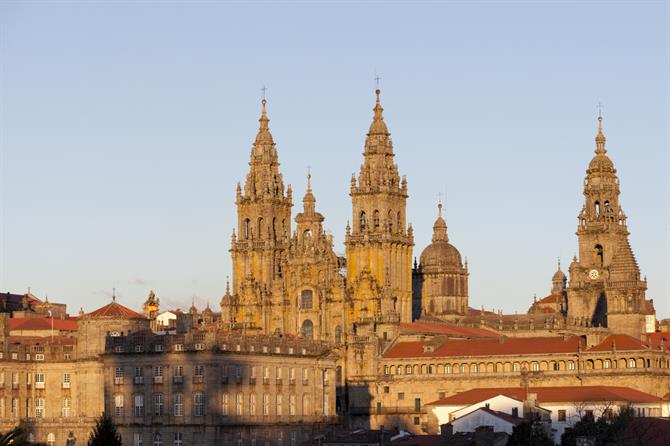
He then returned to Jerusalem, where he became one of the first Christian martyrs. After his death, a group of believers brought his remains to Spain to ensure they would not be desecrated. A church at Compostela in Northern Spain was built to house the remains but was destroyed when the Muslims ruled Spain from around AD 711. Now we have the magnificent cathedral you see here.
The entire trek on foot begins in France and is roughly 560 miles long and takes about 30 days of walking! Many choose a shorter route from the Spanish city of Léon, and even that takes four to six hours of walking per day for seven days to reach Santiago! After all that walking, why not relax in this luxury villa?
2. Leon Cathedral
With reference to the previous religious place to visit, the cathedral de Santiago de compostela, many pilgrims on their way to Galicia, stop off at another veneered place and that is the Cathedral in the often overlooked Spanish city of Leon.
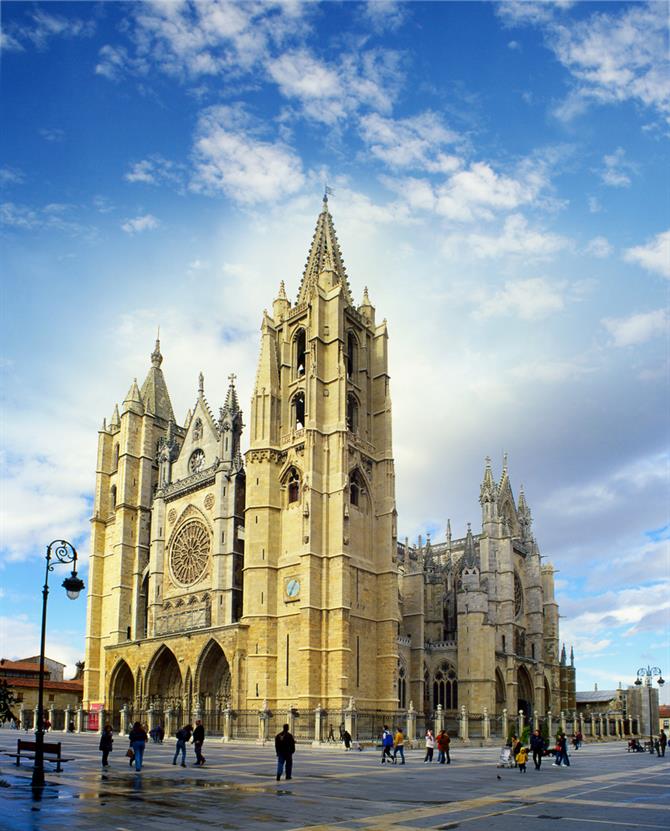
Leon is a lovely place and full of things to do and see such as visit the 13th century Cathedral (above), with jaw dropping architecture and an amazing array of huge stained glass windows and religious works of art.
Just like any modern city though, Leon has plenty of shops to satisfy the most ardent of buyers, along with tapas bars and some great restaurants, The city also has museums and lots of old remains of times gone past.
3. The Holy Grail in the Cathedral of Valencia, Spain
The city of Valencia in eastern Spain is full of surprises whatever way you walk around the city and none is as bigger surprise as finding the elusive holy grail, which, the fathers of the city and of the church proclaim, is the REAL cup of the last supper, however it is but one of several places that claim ownership of the grail.
The places that claim to have the holy grail include the Cattedrale di San Lorenzo Genoa, Italy, the monastery of Santa Maria de Montserrat in Catalonia, and somewhat bizarrely, the Collegiate Chapel of St. Matthew, on Roslin Hill in Scotland, thanks to Dan Brown's book, The Da Vinci Code.
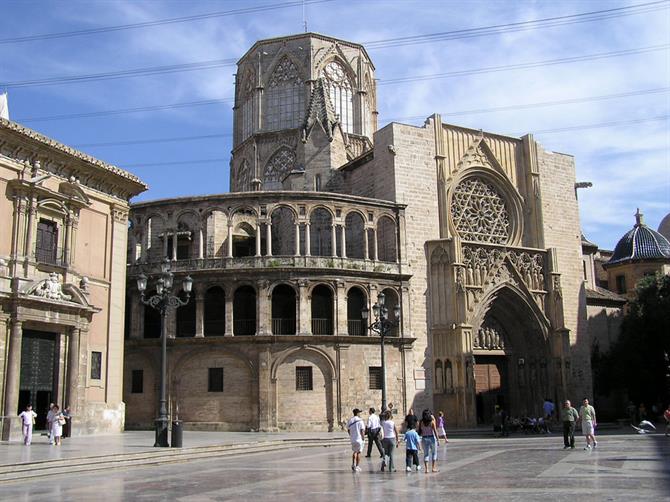
The grail itself, whether you actually believe the story or not, is housed in its own special chapel adjacent to the main cathedral and the museum and regardless of any sceptical thoughts, it's a lovely place to visit, especially on a cool day, and of course as it centrally located, upon exit, the city greets you with a riot of colourful bars, (and some colourful people I may add), amazing Gothic and modernist architecture and loads and loads of other things to do, in fact why not check out one of my guides on Valencia?
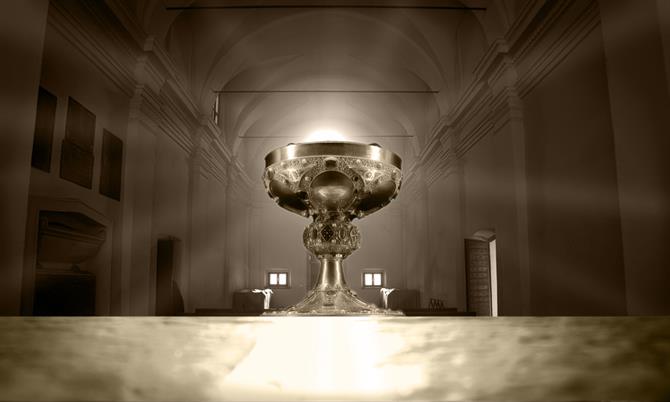
Moving a bit further north up the eastern coast, we find ourselves in the famous Catalan city of Barcelona and the unfinished Cathedral!
4. The Sagrada familia in Barcelona
This amazing building was designed by Art Nouveau architect Antoni Gaudi and work began on this enormous structure in 1882 and perhaps as a testament to the foibles of Spanish construction, and of the rather over ambitious design, the building work is still not completed and no date is set for that either!
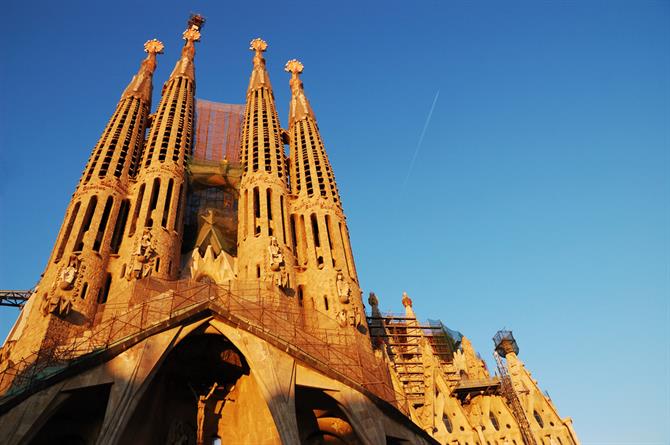
La Sagrada Familia is a perfect example of Art Nouveau architecture and this amazing edifice is filled with countless examples of religious symbolism. The design intended there to be 18 x100 metre towers, but to date only 8 have been finished.
The interior of the cathedral is equally as awe inspiring, as can be seen from the photo below, looking up into the cavernous arched roof spaces.
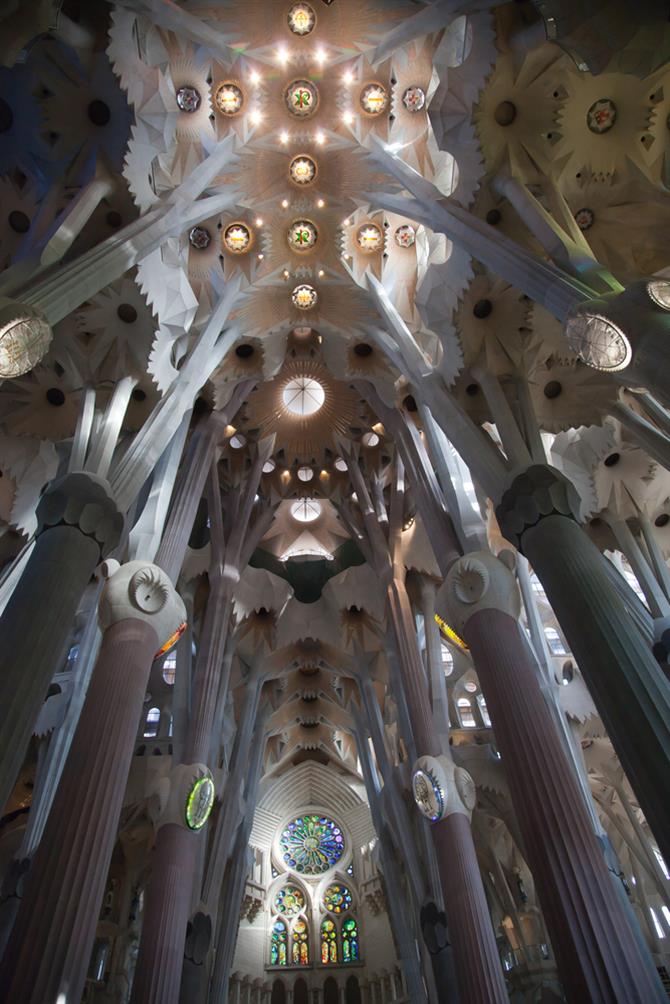
Barcelona is of course full of other things to do and see so maybe I will visit this in a later article.
The last of our religious sites is not of a Christian origin at all, but that of the Moors, the Muslim kings from North Africa who ruled over the land for hundreds of years,
5. Mosque at Cordoba
The very impressive Mosque (or Mezquita) of Cordoba is officially the Cathedral of St. Mary of the Assumption, however most of it's fine architecture is there because of the Muslims, who built it in 8th century, although previous to this, the Romans had a temple here.
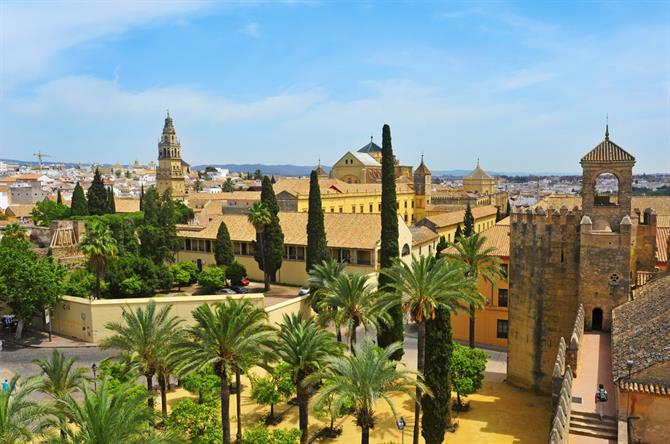
The Mezquita de Cordoba is notable for its giant arches and its forest of over 856 columns of onyx, Granite, jasper marble, taken and recycled from the Roman temple which was the original building on the site.
Make sure to climb the tower known as the Torre del Alminar which rather predictably used to be a minaret, the towers that even modern mosques have, for the daily call to prayer. The view from the top is stunning, I assure you!
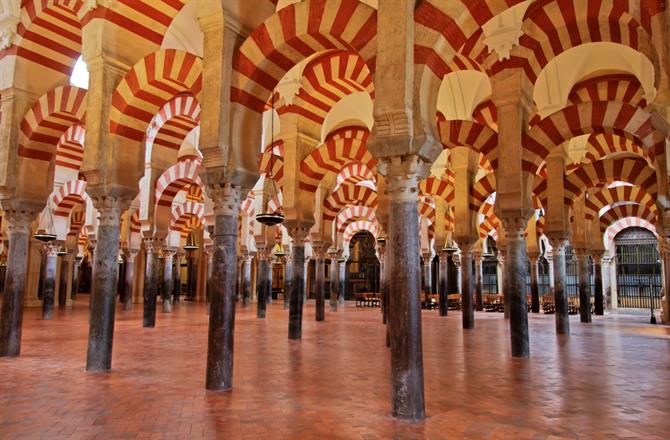
Spain is full of religious buildings that simply scream at you to come and visit them. The rich history and culture of the Spanish people live on in these amazing places, and I hope that you enjoyed this article, and the next time you come to Spain, maybe you will be lucky enough to see one of these wonderful sights for yourself.
